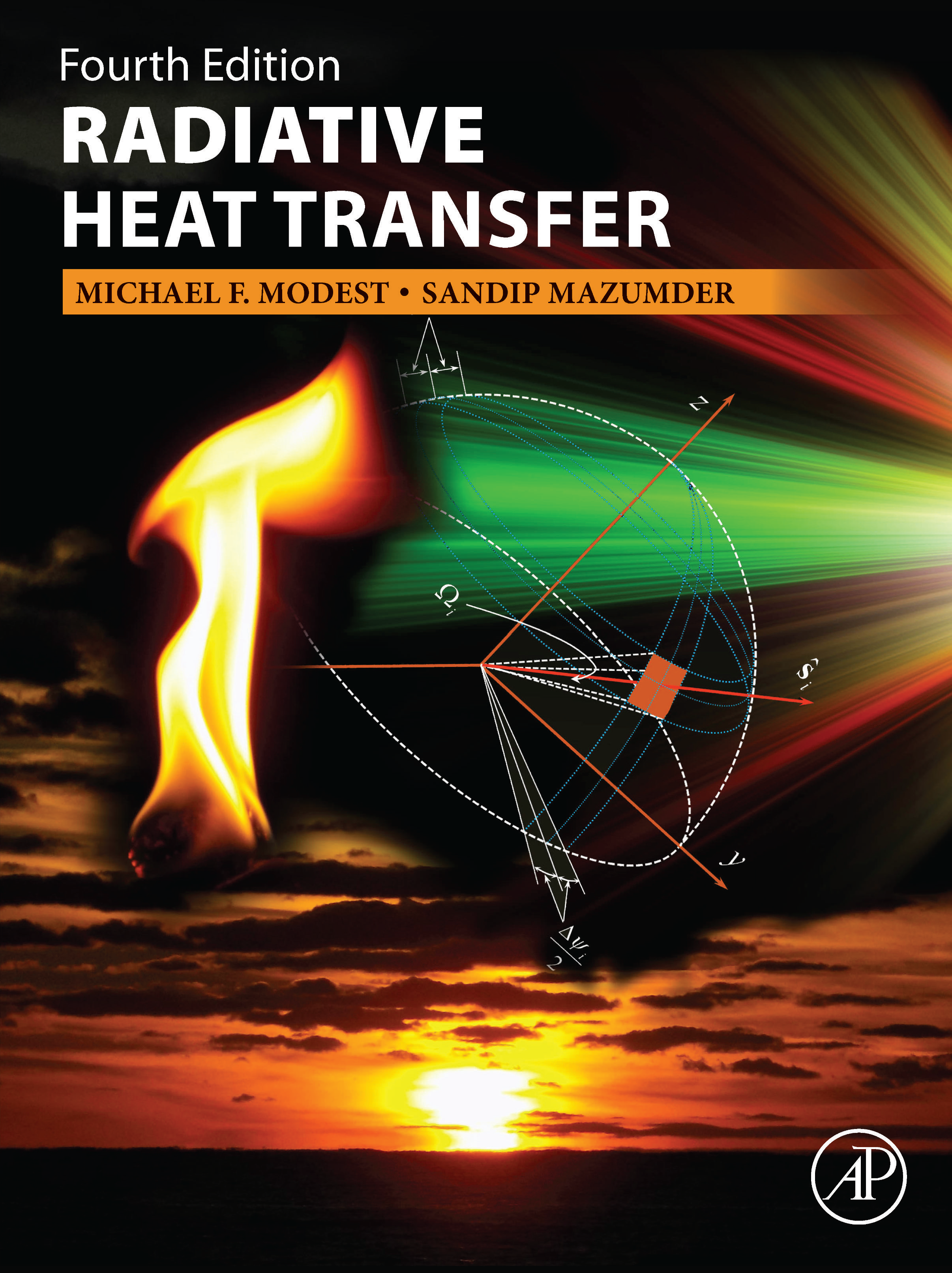Radiative Heat Transfer
 Well, if you want to know about radiation, you simply must read my book "Radiative Heat Transfer." Click here to look at the Table of Contents. Latest 4th ed came out in late 2021.
Well, if you want to know about radiation, you simply must read my book "Radiative Heat Transfer." Click here to look at the Table of Contents. Latest 4th ed came out in late 2021.
You may also want to look at a little description of some of the experimental work we do on surface properties and combustion gas absorption coefficients, using an Infrared Emissometer, an Infrared Transmissometer, and an Integrating Sphere Reflectometer.
Recent Research Projects:
-
-
RANS/PDF modeling of high-pressure laminar and turbulent reacting flows
-
Line-by-line accurat photon Monte Carlo RTE solver
-
Full-spectrum k-distribution spectral models for high-pressure combustion gases and soot
-
High-order spherical harmonics/full-spectrum k-distribution RTE solver
-
High-temperature, high-pressure measurements of gaseous absorption coefficients
-
Radiometric heat transfer measurements in high-pressure combustion environments in cooperation with Edwards AFB
-
Systematic and detailed validation of existing models against experimental measurements
-
-
"High-fidelity multi-phase radiation module for modern coal combustion systems'' NETL/DoE
-
Generation of a Radiative Property Database for Solid Particles (coal, soot, ash, etc)
-
Spectral Models for Solid Particles (extensions of k-distribution schemes developed for gases and soot)
-
New RTE Solvers for Solid Particle–Gas Mixtures
-
Systematic and detailed validation of new Radiation Module, including against experimental measurements
-
Present Research Projects:
-
-
Inverse radiation tools for laminar and turbulent, nonluminous and luminous combustion systems
-
Design of nonintrusive spectral radiation tools for high-fidelity experimental determination of temperatures, species concentrations and soot levels in laminar reacting flows
-
Nonintrusive spectral radiation tools for turbulent systems with significant turbulence-radiation interaction
-
Validation of radiation tools against experiment in cooperation with Edwards AFB and Sandia NL
-
Direct computation of radiation signals recorded by detectors, for the interpretation of raw signals in the validation of computational models
-
-
-
Extension of multiphase spectral models and RTE solution methods to engine-relevant conditions
-
Spectral properties for soot and fuel sprays will be collected and databased, to be used with our established
k-distribution spectral models -
Extension of RTE Solvers to include scattering
-
Porting of radiation modules to LES code
-
Systematic and detailed validation of new Radiation Module, including against experimental measurements
-
Exploration of Radiation and Turbulence-Chemistry-Soot-Radiation Interactions in
Engine-Relevant Environments via RANS and LES
-
-
"A General Solver Framework for Radiative Heat Transfer Models in Combustion Systems'' AFOSR/CFDRC
-
-
Development of a portable spectral module for reacting flow CFD programs
-
Line-by-line absorption coefficients, narrow-band and full-spectrum k-distribution spectral models, gray models
-
Stand-alone turnkey module to generate absorption coefficients, narrow-band and full-spectrum k-distribution spectral models from high-resolution databases
-
Development of a portable radiative transfer equation (RTE) solver module for reacting flow CFD programs
-
-
-
-
High-order spherical harmonics RTE solver (PN)
-
Finite volume based discrete ordinates RTE solver (DOM)
-
Cell based and stochastic media photon Monte Carlo RTE solvers (PMC)
-
-
Line-by-line accurate photon Monte Carlo RTE solver
-
Deterministic RTE solvers (PN, DOM) combined with spectral module
-
Stochastic RTE solvers (PMC) combined with full-spectrum k-distribution
-
Extension of PMC to scattering media, emission and reflection, multi-phase media support
-
Parallelization of all modules
-
Systematic and detailed validation of existing models against experimental measurements
-
Download Page for Full-Spectrum k-Distribution Models and Databases--updated to HITEMP 2010 (moved to repository at Marquette University https://www.eng.mu.edu/ccl/software-data/radiation/)

(single-group, single-scale k-distribution for CO2)



